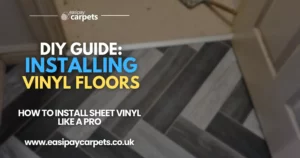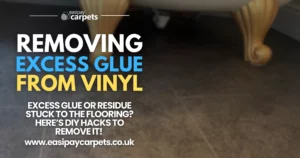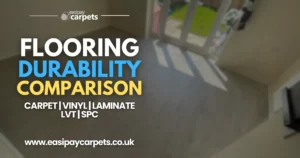

Can You Paint Vinyl Flooring?
Painting over vinyl flooring is a creative and cost-effective way to refresh a room without a full flooring replacement. While not a traditional approach, painting vinyl floors is entirely possible and can yield excellent results when done correctly. This guide will discuss the feasibility, benefits, and step-by-step process of painting vinyl flooring, as well as provide essential tips to achieve the best outcome.
Feasibility of Painting Vinyl Flooring
Vinyl flooring can be painted, but there are several important factors to consider before you decide to undertake this project:
Condition of the Vinyl
The vinyl should be in good condition, without significant tears, bulges, or indentations. Damages might show through the paint or cause adhesion problems.
Type of Vinyl
Smooth vinyl flooring is generally better for painting than textured vinyl, as it provides a more even surface that will hold paint well.
Expectations
Understand that painting vinyl flooring is a temporary solution. Even with the best preparation and quality materials, the paint may eventually wear down, especially in high-traffic areas.
Benefits of Painting Vinyl Flooring
- Cost-Effective: Painting is far less expensive than replacing vinyl flooring.
- Customization: You can choose from a wide range of colors and patterns, allowing for complete customization of your space.
- Quick Transformation: Painting the floor is generally faster than replacing it, so you can quickly update the look of a room.
Step-by-Step Guide to Painting Vinyl Flooring
Step 1: Clean the Floor
Ensure the floor is free of dirt, grime, and oils. Clean thoroughly with a mixture of ammonia and water or a degreasing cleaner to ensure the paint adheres properly.
Step 2: Sand the Floor
Lightly sand the vinyl flooring with fine-grit sandpaper (120-180 grit). This roughens up the surface and helps the primer and paint adhere better. After sanding, clean up all the dust thoroughly.
Step 3: Apply Primer
Use a good-quality primer that’s suitable for vinyl and other non-porous surfaces. Apply a thin, even coat of primer with a roller. Allow it to dry completely, following the manufacturer’s recommendations.
Step 4: Paint the Vinyl Flooring
Choose a paint that is suitable for vinyl flooring or a floor paint that can handle wear and tear. Apply at least two thin coats of paint, letting each coat dry completely before applying the next one. Use a roller for a smooth finish.
Step 5: Seal the Paint
Once the final paint coat is dry, apply a clear polyurethane sealer to protect the paint. This will help extend the life of your paint job and resist wear in high-traffic areas. Apply multiple thin coats, according to the product instructions, allowing adequate drying time between coats.
Tips for Best Results
- Use Low-Traffic Rooms: Consider painting vinyl floors in low-traffic areas to reduce wear and tear.
- Ventilation: Ensure good ventilation during the painting and drying processes.
- Quality Materials: Use high-quality primers, paints, and sealers specifically designed for use on flooring to ensure durability and proper adhesion.
Conclusion
Painting over vinyl flooring is a viable option for those looking to refresh their space without the expense of new flooring. With careful preparation, appropriate materials, and proper application, your painted vinyl floor can look fantastic and last for several years. However, remember that this is more of a temporary fix than a long-term solution, and the longevity of the paint will depend on the level of foot traffic and the room’s usage. If you’re looking for a lasting renovation, replacing the flooring might be a more suitable option.
Easipay Carpets can help you get brand new flooring without the high up-front cost – by simply letting you spread the cost of the flooring over time instead. There’s no interest on our plans so you aren’t spending a penny more than you would buying it outright and we include underlay, door trims, carpet grippers and laminate beading for free. Prices start from just £10 per week!
It starts with a free home appointment and quote, to get booked in at a time that suits you, tap the “Get Started” button below and fill out the contact form!
Still Got Questions? Here's 10 FAQs!
Use a high-quality latex or acrylic floor paint designed for durability and adhesion on flooring surfaces. These types of paints are formulated to withstand foot traffic and wear.
Yes, sanding is crucial as it helps to roughen the surface, allowing the primer and paint to adhere better. Use fine-grit sandpaper and ensure you clean up all the dust afterward.
It’s best to use a primer specifically designed for use on vinyl or non-porous surfaces. These primers will ensure better adhesion of the paint to the vinyl flooring.
Drying times can vary based on the type of paint used, the thickness of the application, and the humidity and temperature of the room. It’s typically recommended to wait at least 4-6 hours between coats, but always check the manufacturer’s recommendations.
Allow the final coat of paint to dry completely, which can take about 24-72 hours, before walking on it. Wait even longer (about 7 days) before moving furniture back in to ensure the paint is fully cured.
Keep the floor clean by regularly sweeping and mopping with gentle, non-abrasive cleaners. Place mats at entrances to reduce dirt and grit that can scratch the floor. Avoid using harsh chemicals or scrub brushes that might damage the paint.
Peeling paint is often a sign of moisture issues or poor adhesion. Address any underlying moisture problems first, then sand the peeling area, apply a fresh layer of primer, and repaint as needed.
Yes, applying a clear polyurethane sealer after painting is highly recommended. It protects the paint from scratches, scuffs, and moisture, and extends the life of your paint job.
While you can paint vinyl floors in any room, it’s best suited for low to moderate traffic areas. High moisture areas like bathrooms and kitchens might require more frequent touch-ups.
Painting vinyl flooring is generally considered a cosmetic fix and not a value-adding renovation. While it can enhance the appearance and appeal of a room, it may not increase your home’s market value like new flooring would.




